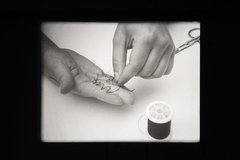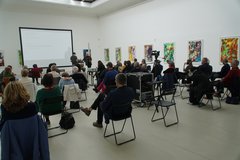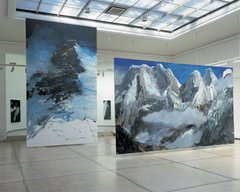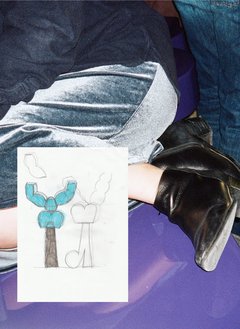Norbert Pfaffenbichler, co-curator of the exhibition The Remains of Cinema, on the differences and commonalities between film and the fine arts, and on the significance of collecting
Collecting and Yearning
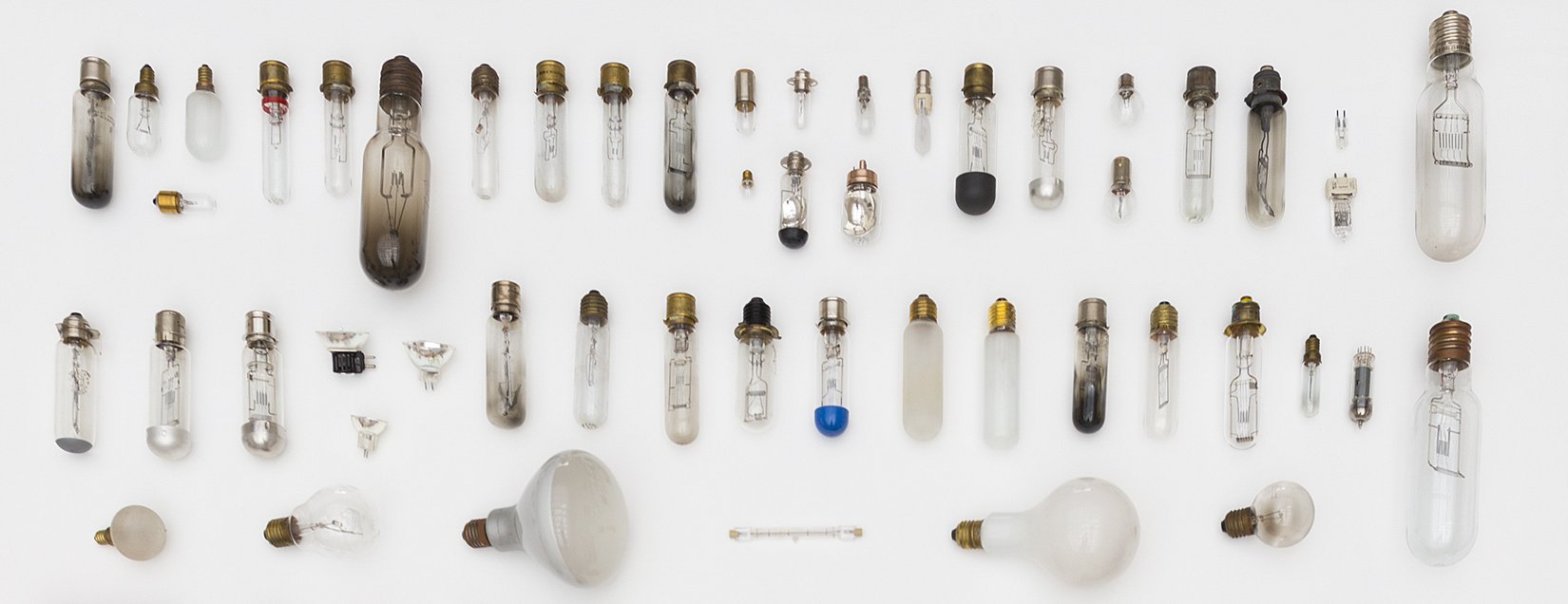
A main concept of the film-specific exhibition project The Remains of Cinemais “collecting,” for different collections from the context of film are presented at equal stature with contemporary art, all of which are now on view to the public for the first time.
The collecting of items unrelated to the sustainment of life is generally an irrational activity. When done not purely due to speculative aspects or prestige, then intensive libidinal object relations are presupposed. The boundaries to fetishism and animism are blurred here. In the exhibition, three kinds of collections are represented: public collections, private collections, and collecting as an artistic practice.
Within the exhibition, the world of cinema is short-circuited with that of fine arts. In terms of mythology, rituals, and fetishisms, both cinema and art reciprocally engage at their respective outer borders. The two worlds have their codified, constitutive myths, their fixed rituals, and their desirable fetishes; their gods, idols, pillar saints, prophets, martyrs, high priests, dogmatists, dignitaries, disciples, and the devout. A visit to the cinema plays out just as ritualistically as a vernissage, and the ceremonial aspect cannot and should not be disrupted. The art establishment could not exist without the myth of the artist’s genius and of the original, while cinema could not exist without the system of stars and fan culture. Economically speaking, art can only function as long as it is elitist, and cinema only as long as it remains mass entertainment; one is an exclusive luxury item, the other a commercial product of industry. The different objects of ritualistic adoration are fully owed to various structures of production, presentation, and most especially the incongruous utilization patterns.
Collecting is a basic requirement for the entire art world. Without private and public art collections, the art scene could not exist, plain and simple. Considering that the fine arts are excellently suited to financial investment due to the unique nature of the respective objects, the public, museal collections have increasingly put at a disadvantage because of the absurdly high prices. “Oligarch art” and “victor art”[1] are terms that appear in this context for good reason. Art is a convention and the value of the objects a question of faith, without real equivalents.
In the film world, collecting mania exists as well, in manifold form. The task of film museums and archives is to safeguard filmic heritage. Although this sounds easy, upon closer examination it is an extremely complex and difficult calling. Since no archive in the world can collect everything, the question arises as to what is even valuable enough to warrant preservation and safekeeping? And this is followed just by the next question: How to store it? We live in an age of fundamental mediatic and societal upheaval, which is clearly also putting pressure on the archive. Realistically speaking, the “digitalization” of filmic heritage prompts more questions and presents a greater problem than it might seem at first glance. Every few years there are new digital formats, operating systems, and storage mediums. The half-life period of hard drives, for instance, is considerably shorter than that of analogue film material. Most film archives only lend out digital copies of the film classics, which on the one hand preserves the original film material, yet it doubtlessly changes the character of reception. Countless film archives are already presenting their treasures on YouTube.
The Remains of Cinema, however, is showing not only films, but also an incalculably large range of objects of different kinds. On the one hand, this involves things related to the projector itself. The exhibition features, for example, film reels of the various film formats (8mm, 16mm, 35mm, 70mm) or a collection of film projector lights borrowed from the inventory of the Austrian Film Museum. On the other hand, there are products that were specifically produced for the making of a film, such as sets, costumes, and props. Also on show are items like specialist books, film magazines, soundtracks, photo albums, and action figures, many of which were obsessively collected by private individuals.
I would like to discuss two of the exhibited historical collections more closely. The first would be the historical film magazines loaned from David Quigley, namely, original issues of the magazines Cahier du Cinemaand Film Culturefrom the 1960s. “Nouvelle Vague” directors like Francis Truffaut and Jean-Luc Godard began their careers as film critics at Cahier du Cinema, and it was there that they articulated their ideas related to an “author cinema.” The Anthology Film Archives in New York founded by Jonas Mekas, in contrast, issued a magazine, Film Culture, primarily devoted to experimental film. The layout of these issues, each designed in a totally different way, was undertaken by George Maciunas, founder of the Fluxus movement. Considering that the historical exhibits had to be presented under glass, Quigley created facsimiles from some of these historical magazines, which the visitors could leaf through and read.
Taken from the inventory of the Austrian Film Museum is a series of albums and magazines devoted completely to the American actor Charles Bronson. The albums are clad in velvet and furnished with brass fittings, which clearly emphasizes the value the photographs and autographed cards held for an anonymous collector. Pasted into school notebooks are clippings of TV programs, some quite tiny and all labeled with handwritten notes. Further, the compilation features typewritten sheets on which the author traces, in broken German, the biography of “Charli” in his or her own words. These exhibits poignantly bear witness to the amount of passion and “lifeblood” invested in such collections at the time. Cinema has created mythological heroic figures that represent both an identification model and an unattainable ideal at the same time. They filled the metaphysical gap torn into the lifeworld of the “laboring masses” by modernism.
The palette of symptoms of cinephilia is quite extensive. Apparently, there are but few overlaps among the fan groups of horror films and romantic comedies, of Star Warsand Frozen. Even the tangibly collected objects differ, such as DVDs, magazines, books, posters, soundtracks, comics, figures, et cetera.
Since the rise of Conceptual Art in the 1960s, the collecting of artifacts has become an accepted artistic practice. The counterpart of the readymade, objet trouvé, collage, and assemblage, from the world of art, is in cinema the found footage film. Presented in the exhibition is a whole series of artistic positions based on diverse collections.
The first physical juxtaposition of public/museal and private collections vis-à-vis collections by artists is revealing, although the differences are smaller than might be expected. People working in public institutions ultimately also have special inclinations and interests, which are in turn reflected in the collections. In the exhibition, it is often hard to determine what is actually contemporary art and what is a historical object collection. For example, the extensive collection of projector lamps—compiled by Paolo Canepelle, head of the archive at the Austrian Film Museum—could easily pass as an art installation. After all, private collectors, like artists, collect according to their own obsessions and have no need to cater to completeness or historical relevance.
Haim Steinbach has developed a very special way of presenting collections of selected artifacts. Shown on brightly colored, minimalist shelf objects, each produced by the artist specifically to show the respective collection, several “found” objects are displayed in a strict horizontal row. The combination of these readymades are always surprising and unusual. In the case of the work shown in the exhibition, historical, hand-formed boccia balls of metal are shown next to a contemporary Hulk action figure of plastic, with the green shade of this Marvel monster contrasting with the orange-yellow of the shelf object.
Photo collages clearly presuppose a certain stock of image material. Different photo collaging techniques by John Baldessari, Karl Holmqvist, John Stezaker, and Mika Taanila are found in the show. It is not by mere chance that representatives of the “Pictures” generation, such as Ann Collier and Erica Baum, work serially and exhibit their arrangements of selected image catalogues. Similar to readymades, the selection of material is already part of the artistic process. For instance, stereotypical motifs and production styles found in cinema are exposed as such through the act of combining and juxtaposing, which in turn allows conclusions to be drawn about conditions within society. In his photo series the French artist Eric Rondepierre has totally removed the actors from Hollywood classics and shows uncanny, digitally manipulated interiors devoid of people.
Noticeable in the exhibition is the fact that the contemporary artists mainly reference the “golden age” of film. Cited most frequently are classical Hollywood cinema and the European author films of the 1950s and 1960s. Early and postmodern cinema, by contrast, are hardly mentioned, nor are other genres of films from other regions.
This has to do both with the relatively simple accessibility of the material, from a pragmatic perspective, and with film historiography and the canonization of these films in Western societies. During the heyday of Hollywood film, the significance of cinema was quite different than today. At the time, actors were not merely random celebrities, but rather immortal, almost “godly” idols. Next to literature and pop culture, the commercial motion picture offers a comprehensive range of role models. Female idols are integrated into artistic projects much more frequently than male idols. For example, the Austrian media artists Constanze Ruhm and Michaela Schwentner allude in their conceptual works to famous women protagonists from the history of author cinema. Only Holmqvist takes up the (homoerotically connoted) male stars of postmodern cinema in his image-text collage.
Two works by the Austrian filmmaker and trained projectionist Johann Lurf are shown, both based on the act of activity. For one, he is presenting a series of risograph prints that are exact reproductions of filmstrips in all formats ever produced; secondly, a found footage piece by Lurf for which he quickly assembled twelve logo animations from major Hollywood studios.
A found footage film of a different nature comes from Viktoria Schmid, who has YouTube videos of the demolition of a building belonging to the Kodak company played backward. The 16mm flicker film loop by Björn Kämmerer is likewise based on a rather morbid collection: he purchased all targets available in the United States for gunmen that photographically render armed people in life size, with the aim of photographing them in turn. Siegfried A. Fruhauf collected filmic rubbish for a photo series and an experimental film, which he then scanned in high resolution and animated. Due to the extreme enlargement, the damaged film frames turn into an aesthetic experience.
Collections of self-produced artifacts by Jörg Buttgereit and Hans Scheugl are on view in the exhibition. The Berlin-born film, theater, and radio play director Buttgereit is exhibiting various well-preserved props from his filmic activity from the 1980s and 1990s, which has kept over the course of decades. The Austrian avant-garde film pioneer Hans Scheugl is showing magazines with drawings that he drafted at the age of nine years from memory after many visits to the cinema.
In his closed-circuit installation, Bernd Oppl shows a model of “invisible cinema” recessed into a wall of the projection room at the Austrian Film Museum in Vienna’s Albertina. The faces of the exhibition visitors appear as a close-up on the screen at the back of the model. So the Film Museum, which is a cooperation partner and lender for the current exhibition project, is additionally inscribing itself physically into the show as model.
Joseph Beuys created sixty-three multiples of the film The Silenceby Ingmar Bergman, produced in 1963, by galvanizing the film reels and thus repurposing them as sculpture. Tautologies were very popular with conceptual artists. Accordingly, Beuys silenced The Silence.
Objects from fan culture are explored by the Japanese filmmaker and object artist Ryusuke Ito, even if this does not involve an actual collection. Small, detailed models of famous film scenes, equipped with electric motors for movement, are filmed with mini-cameras and projected onto a wall in huge size. The humor of this closed-circuit installation lies in its scale: cinema appears first in toy format and then “bigger than life” as well.
Antoinette Zwirchmayr’s three-part lyrical installation, based on a poem by Paul Celan, consists of a 16mm film loop, a table, and a luminous table. Thematized here are writing and language, seeing and touching, since the artist employs Braille and the Latin alphabet. The black-and-white film reveals how the artist uses her right hand to sew together the fingers of her left hand.
As the only painterly position, the Berlin- and Vienna-based artist Katrin Plavčak created five large wooden sculptures specially for this exhibition. They are painted with an illustrious gathering of famous figures out of different film genres from various decades of the twentieth century: Hedy Lamarr meets Godzilla, Divine meets Darth Vader, E.T. meets Charlie Chaplin, and so forth.
Aside from Plavčak, all participating Austrian artists are active as experimental filmmakers. Experimental film is just as distant from commercial cinema as it is from the fine arts. As an “orchid” or niche discipline, it inevitably enjoys a special status outside the confines of any market-oriented logic and beyond commercial interests. Cinema and art are fixed points of reference for experimental film, however from a formal-aesthetic perspective, it is much more closely aligned to music and lyric poetry. As demonstrated by the exhibition, the separation of the realms of art and experimental film is by no means due to the artworks themselves, but rather solely due to the disparate application contexts and financing models (film festivals here, galleries there).
Much of “what remains of cinema” has already been lost, and much is yet to be lost and forgotten in the future. The epochal transformation of media and society in the present day will naturally impact cinema as well. Film history has become a purely academic, specialized discipline, while modern, classical cinema is experiencing a spectral afterlife in art. So the process of being forgotten is still being artificially prolonged, though it is worth noting how woefully little art and cinema actually engage with each other. In a best-case scenario, there is interest in the stars of the other culture.
When contemporary artists turn to cinema, they are intentionally training their gaze on something bygone, on a piece of history. Artists like Baldessari, Beuys, or Stezaker, by contrast, explore the defining medium of their time, avoiding nostalgia. Today, however, such nostalgia unquestionably always resonates, whether intentional or not. Analogue film material has completely disappeared from commercial cinema; but analogue film is of interest to the art market, because here—quite contrary to Walter Benjamin’s theories—there is still something like a salable “original.”[2]
Commercial cinema is the medium of narration, of identification, of emotion, of sensations, of shock, of laughter, of weeping. Modern art stands for critical reflection, conceptual strategies, and formal-aesthetic experiments. The yearning of art for grand emotion is inscribed into many of the exhibited works. Melancholy can only be felt by those still capable of remembering.
Archival material: Objects, Austrian Filmmuseum, Vienna
exhibition view, Künstlerhaus, Halle für Kunst & Medien, Graz, 2018, photo: Markus Krottendorfer
[1]
See Wolfgang Ullrich,
Siegerkunst: Neuer Adel, teure Lust
(Berlin: Wagenbach, 2016).
[2] See Walter Benjamin, Das Kunstwerk im Zeitalter seiner technischen Reproduzierbarkeit (1935; repr., Berlin: Suhrkamp, 2010). Published in English as: Walter Benjamin, The Work of Art in the Age of Its Technological Reproducibility, and Other Writings on Media, ed. Michael W. Jennings et al. (Cambridge, MA: Belknap Press, 2008).



